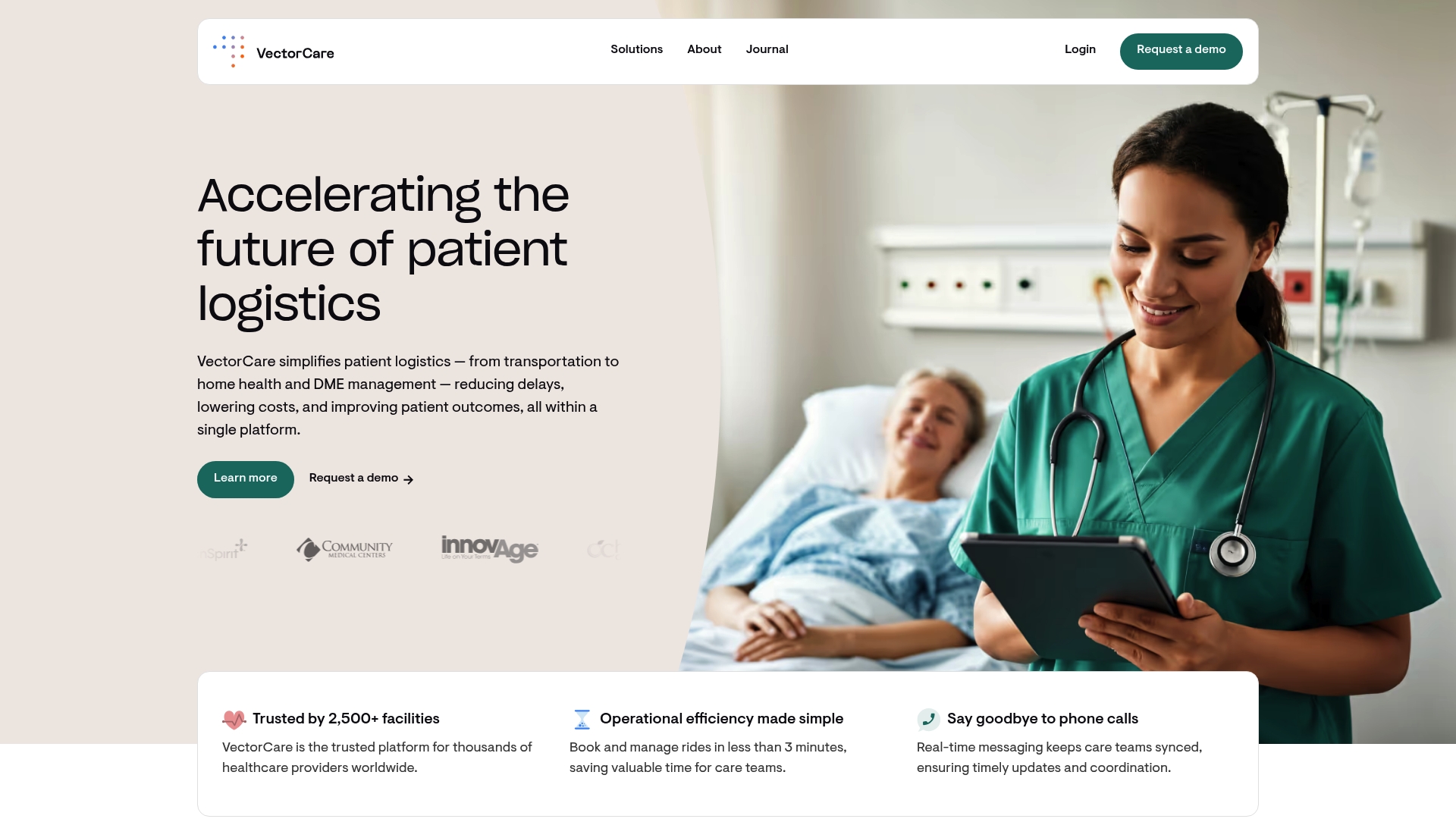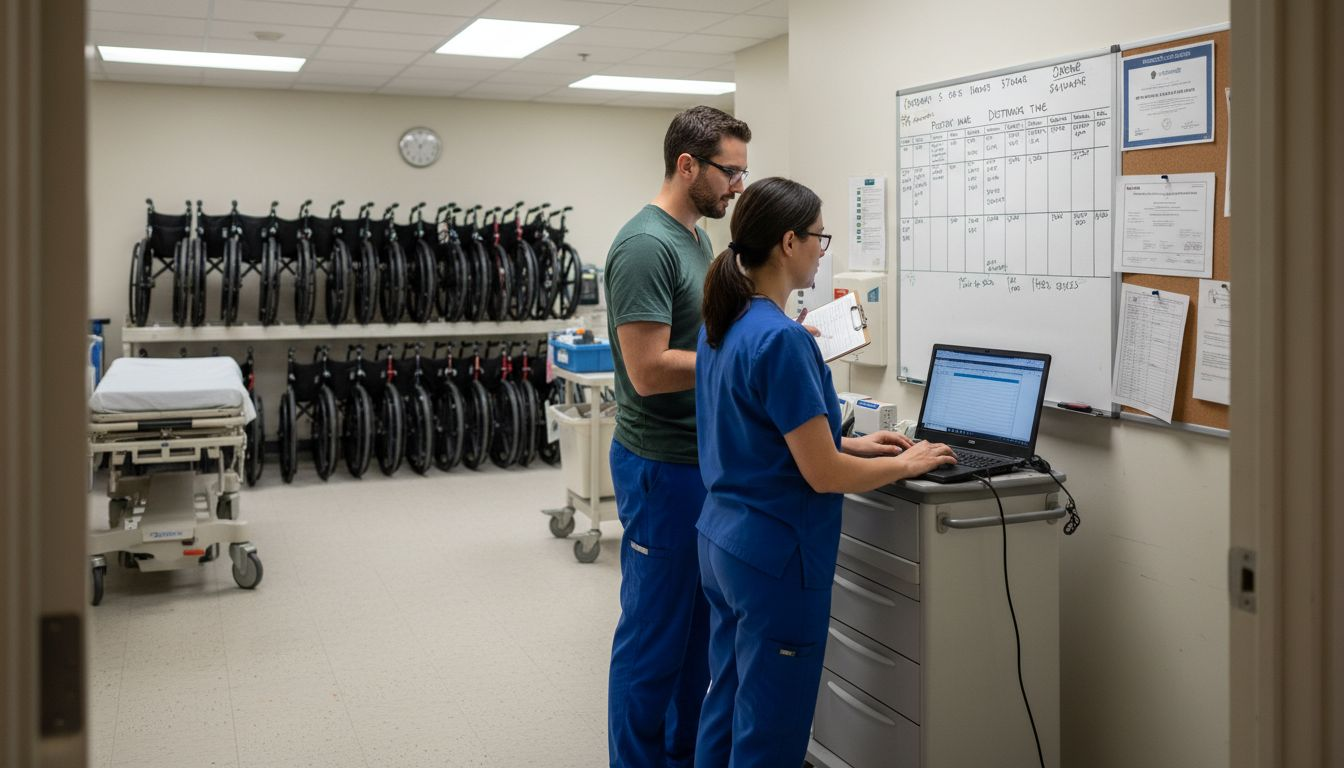7 Ways to Improve Patient Satisfaction Scores

Patient satisfaction scores shape everything from reputation to finances in healthcare today. Yet even with new technologies and modern facilities, less than 50 percent of patients say their expectations are consistently met. This might sound surprising, but the biggest needle-movers for satisfaction scores are not expensive upgrades. They come down to habits and interactions you can start improving right now.
Table of Contents
- Enhance Communication Skills Among Staff
- Implement A Feedback System For Patients
- Train Staff On Empathy And Compassion
- Streamline Appointment Scheduling Processes
- Improve Facility Cleanliness And Ambiance
- Engage Patients In Their Care Plans
- Utilize Technology For Better Patient Interactions
Quick Summary
| Takeaway | Explanation |
|---|---|
| Enhance staff communication skills | Prioritize training in active listening, empathy, and clarity to improve patient experiences. |
| Develop a patient feedback system | Implement multi-channel feedback collection methods to understand patient perspectives and improve care. |
| Train staff on empathy and compassion | Foster emotional intelligence through training to enrich patient interactions and satisfaction. |
| Streamline appointment scheduling processes | Create user-friendly and accessible booking options to reduce patient frustration and enhance experience. |
| Engage patients in their care plans | Empower patients with information and collaborative decision-making to improve their satisfaction and outcomes. |
1: Enhance Communication Skills Among staff
Effective communication is the foundation of exceptional patient care and satisfaction. Healthcare organizations must prioritize developing robust communication skills among all staff members to create a patient-centered environment that promotes trust, understanding, and positive interactions.
Improving staff communication involves multiple strategic approaches. Research demonstrates that systematic communication skills training can significantly enhance patient experiences and outcomes. Staff should focus on several key communication competencies:
- Active listening: Paying full attention to patients and colleagues
- Empathy: Understanding and acknowledging patient emotions
- Clear and concise language: Using straightforward medical terminology
- Non-verbal communication: Managing body language and tone
Healthcare leaders can implement comprehensive training programs that simulate real-world scenarios, allowing staff to practice and refine their communication techniques. These programs should cover verbal and non-verbal communication strategies, cultural sensitivity, and effective patient interaction methods.
Additionally, organizations should establish communication protocols that standardize interactions across different departments. This might include structured communication frameworks like SBAR (Situation, Background, Assessment, Recommendation) for handoffs and interdepartmental communication.
Technology can also play a crucial role in enhancing communication. Digital platforms that facilitate clear, secure, and instant communication between staff members can reduce misunderstandings and improve overall team coordination.
By investing in communication skill development, healthcare organizations can create a more responsive, compassionate, and patient-focused environment that directly contributes to higher patient satisfaction scores.
2: Implement a Feedback System for Patients
Effective patient feedback systems are critical for healthcare organizations seeking to improve satisfaction scores and overall patient experience. Research from the Journal of Patient Experience highlights the significant impact of structured patient feedback mechanisms in driving meaningful improvements in healthcare delivery.
A comprehensive patient feedback system should encompass multiple channels and approaches to capture nuanced patient perspectives. Healthcare providers can design feedback collection strategies that are both accessible and meaningful:
- Digital surveys: Quick online questionnaires after patient interactions
- Real-time mobile feedback: Instant response options via smartphone applications
- Post-discharge phone interviews: Detailed qualitative feedback collection
- Physical feedback stations: Convenient kiosks within healthcare facilities
Critical considerations for implementing an effective feedback system include ensuring anonymity, making submission processes simple, and demonstrating visible response to patient input. Patients are more likely to provide honest feedback when they feel their perspectives will be genuinely considered and potentially implemented.
Healthcare organizations should train staff to view feedback as an opportunity for continuous improvement rather than criticism. This approach transforms feedback from a passive data collection exercise into an active quality enhancement strategy.
Technology plays a pivotal role in modern feedback systems. Discover how patient transport solutions can enhance satisfaction tracking, integrating feedback mechanisms directly into patient journey management.
Additionally, organizations must establish clear protocols for analyzing and acting on collected feedback. This involves creating cross-functional teams responsible for reviewing input, identifying trends, and developing targeted improvement strategies.
By developing a robust, multi-channel feedback system, healthcare providers can create a responsive environment that continuously adapts to patient needs and expectations, ultimately driving higher satisfaction scores and improved patient experiences.
3: Train Staff on Empathy and Compassion
Empathy and compassion are fundamental cornerstones of exceptional patient care that directly influence patient satisfaction scores. Recent research from the National Institutes of Health demonstrates that healthcare staff trained in empathy consistently deliver higher quality patient experiences.
Healthcare organizations must develop comprehensive training programs that transform technical medical professionals into emotionally intelligent caregivers. These programs should focus on cultivating genuine human connections beyond standard medical protocols.
Key components of empathy training include:
- Emotional intelligence development: Understanding and managing personal and patient emotions
- Active listening techniques: Learning to hear and validate patient experiences
- Cultural sensitivity training: Recognizing diverse patient backgrounds and perspectives
- Stress management strategies: Helping staff maintain compassionate interactions under pressure
Practical training methods can incorporate role-playing scenarios, simulation exercises, and reflective practice sessions. These approaches allow staff to practice empathetic responses in controlled environments, building confidence and skill.
Learn more about integrating mindfulness techniques in professional settings to support emotional resilience and compassionate care delivery.
Beyond initial training, healthcare organizations should establish ongoing support mechanisms. Regular workshops, peer mentoring programs, and reflective practice sessions can help staff continuously refine their empathy skills.
Organizational leadership plays a critical role by modeling compassionate behavior and creating a culture that values emotional intelligence as much as clinical expertise. By prioritizing empathy training, healthcare providers can transform patient interactions from transactional encounters to meaningful, supportive experiences that significantly enhance overall patient satisfaction.
4: Streamline Appointment Scheduling Processes
Efficient appointment scheduling is crucial for creating positive patient experiences and improving overall satisfaction scores. Research in the Journal of Medical Internet Research indicates that digital scheduling solutions can dramatically transform patient interactions with healthcare systems.
Healthcare organizations must focus on developing user-friendly scheduling processes that minimize patient frustration and administrative complexity. Modern scheduling systems should prioritize accessibility, convenience, and patient-centric design.
Key strategies for streamlining appointment scheduling include:
- Multi-channel booking options: Online portals, mobile apps, telephone, and in-person scheduling
- Real-time availability tracking: Instant visibility into open appointment slots
- Automated reminder systems: Reducing no-show rates through personalized notifications
- Flexible rescheduling mechanisms: Easy modification of existing appointments
Explore how technology is transforming patient appointment logistics to understand innovative approaches in scheduling management.
Technology plays a critical role in modernizing scheduling processes. Advanced scheduling platforms can integrate with electronic health records, allowing seamless information transfer and reducing administrative overhead. These systems can also provide patients with comprehensive details about their upcoming appointments, including expected wait times, required documentation, and preparation instructions.
Healthcare providers should regularly analyze scheduling data to identify bottlenecks, optimize resource allocation, and continuously improve patient access. This might involve implementing intelligent scheduling algorithms that consider factors like physician availability, patient preferences, and historical appointment patterns.
By prioritizing streamlined, patient-friendly scheduling processes, healthcare organizations can significantly enhance patient satisfaction, reduce administrative burden, and create more positive healthcare interactions.
5: Improve Facility Cleanliness and Ambiance
Patient perception of healthcare environments extends far beyond medical treatment, with facility cleanliness and ambiance playing a critical role in overall satisfaction scores. Research published in the Journal of Patient Experience demonstrates that environmental factors significantly influence patients’ psychological comfort and their evaluation of care quality.
Healthcare facilities must adopt a comprehensive approach to creating welcoming, hygienic environments that promote healing and reduce patient anxiety. The physical environment serves as a silent communicator of an organization’s commitment to patient care and professionalism.
Key considerations for improving facility environment include:
- Enhanced cleaning protocols: Implementing rigorous, visible sanitization practices
- Aesthetic improvements: Creating calm, soothing visual environments
- Comfortable waiting areas: Designing spaces that reduce patient stress
- Modern, well-maintained equipment: Reflecting organizational quality and care
Cleanliness goes beyond surface-level appearance. It encompasses comprehensive infection control, patient safety, and psychological comfort. Staff should be trained to maintain high standards of hygiene and create an atmosphere of professionalism and care.
Environmental design elements can significantly impact patient experiences. This includes strategic use of lighting, color schemes that promote calmness, comfortable seating, clear wayfinding signage, and access to natural elements like plants or outdoor views.
Technology can support cleanliness efforts through advanced tracking systems that monitor cleaning schedules, inventory cleaning supplies, and ensure consistent environmental maintenance. Digital checklists and real-time monitoring can help healthcare facilities maintain exceptional standards.
By investing in facility cleanliness and creating a thoughtfully designed environment, healthcare organizations demonstrate respect for patients and commitment to providing comprehensive, compassionate care that extends beyond medical treatment.
6: Engage Patients in Their Care Plans
Patient engagement represents a transformative approach to healthcare delivery, shifting from traditional passive treatment models to collaborative, patient-centered care strategies. Research from the U.S. National Library of Medicine highlights that actively involving patients in their care planning significantly improves satisfaction scores and clinical outcomes.
Healthcare providers must develop comprehensive strategies that empower patients to become active participants in their health management. This approach requires creating transparent, accessible communication channels and providing patients with the knowledge and tools to make informed decisions.
Key strategies for effective patient engagement include:
- Personalized education: Providing clear, understandable information about individual health conditions
- Shared decision-making: Collaboratively developing treatment plans
- Digital health tools: Utilizing patient portals and mobile applications
- Regular communication: Establishing consistent touchpoints between patients and healthcare teams
Explore strategies for improving patient satisfaction through remote monitoring to understand advanced engagement techniques.
Technology plays a crucial role in patient engagement, offering platforms that enable real-time communication, health tracking, and personalized educational resources. Electronic health records with patient portals allow individuals to access their medical information, review treatment plans, and communicate directly with healthcare providers.
Healthcare organizations should invest in training staff to develop strong patient communication skills, focusing on empathy, clarity, and the ability to explain complex medical information in accessible language. This approach helps patients feel more confident and involved in their care journey.
By prioritizing patient engagement, healthcare providers can create a more collaborative, transparent healthcare experience that not only improves satisfaction scores but also potentially enhances clinical outcomes and patient well-being.
7: Utilize Technology for Better Patient Interactions
Digital technology has revolutionized patient interactions, offering unprecedented opportunities to enhance communication, accessibility, and overall healthcare experiences. Research from the Permanente Journal demonstrates that technology-enabled patient interactions can significantly improve satisfaction and engagement.
Healthcare organizations must strategically leverage technological solutions that create seamless, user-friendly patient experiences. The goal is to implement technologies that simplify complex healthcare processes while maintaining personal, empathetic connections.
Critical technological approaches for improving patient interactions include:
- Secure messaging platforms: Enabling direct, convenient communication with healthcare providers
- Patient portals: Offering comprehensive access to medical records and test results
- Telehealth solutions: Providing remote consultation and monitoring capabilities
- Mobile health applications: Supporting personal health tracking and management
Discover how technology empowers healthcare professionals to transform patient interactions and experiences.
Advanced technologies like artificial intelligence and machine learning can personalize patient interactions by predicting individual health needs, recommending preventive care, and creating tailored communication strategies. These technologies enable healthcare providers to offer more proactive, individualized care experiences.
Implementing robust cybersecurity measures is crucial when developing digital patient interaction platforms. Patients must feel confident that their personal health information remains protected and confidential while enjoying the convenience of digital healthcare tools.
By thoughtfully integrating technology, healthcare organizations can create more responsive, accessible, and patient-centered care environments that meet the evolving expectations of modern healthcare consumers.
The following table summarizes the seven key strategies presented in the article to enhance patient satisfaction scores, highlighting the action steps and their direct benefits for healthcare organizations and patients.
| Strategy | Key Actions/Steps | Benefits/Outcomes |
|---|---|---|
| Enhance Staff Communication Skills | Train staff in active listening, empathy, clarity, and non-verbal skills; use communication protocols and simulation training | Builds trust, reduces misunderstandings, creates positive patient experiences |
| Implement a Patient Feedback System | Use digital surveys, real-time/mobile feedback, phone interviews, kiosks; ensure anonymity and staff responsiveness | Identifies improvement areas, empowers patients, supports continuous enhancement |
| Train Staff on Empathy and Compassion | Offer emotional intelligence and stress management training; use role-play and reflective sessions; encourage leadership modeling | Improves patient-staff connections, enriches care experiences, raises satisfaction |
| Streamline Appointment Scheduling | Provide multi-channel booking, real-time availability, reminders, easy rescheduling; leverage technology and data analysis | Reduces frustration, increases convenience, lowers no-shows, improves accessibility |
| Improve Facility Cleanliness & Ambiance | Adopt strict cleaning protocols, enhance comfort and aesthetics, maintain modern equipment, train staff in hygiene | Boosts psychological comfort, decreases anxiety, signals quality and professionalism |
| Engage Patients in Care Plans | Deliver personalized education, enable shared decision-making, use digital tools and patient portals, ensure regular communication | Increases patient empowerment, enhances outcomes, builds transparency and trust |
| Utilize Technology for Patient Interactions | Implement secure messaging, telehealth, mobile apps, EHR-integrated portals; personalize with AI; ensure strong data security | Expands access, personalizes care, streamlines processes, strengthens engagement |
Ready to Elevate Patient Satisfaction with Seamless Healthcare Logistics?
Do recurring delays, inefficient scheduling, and fragmented communication keep your patient satisfaction scores from reaching their full potential? As described in the article, patients today expect transparent communication, real-time updates, and smooth coordination across every touchpoint of their healthcare journey. Pain points like disjointed appointments, slow response to feedback, and logistical challenges can quickly erode trust and overall satisfaction. VectorCare exists to solve these exact challenges. Our digital platform empowers your organization to optimize appointment scheduling, automate patient transport, and create a unified workflow that boosts engagement and care outcomes. Discover how features like secure communication, real-time data insights, and user-friendly interfaces drive higher patient satisfaction effortlessly.

Do not let outdated processes hold your team or your patients back. Take the next step to transform your care delivery and stand out for outstanding patient experiences. See how VectorCare’s digital platform can help you automate logistics, respond faster, and deliver the care your community deserves. Visit our homepage to learn more and schedule a live platform demo today.
Frequently Asked Questions
What are some effective ways to enhance communication skills among healthcare staff?
Improving communication skills can be achieved through comprehensive training programs that focus on active listening, empathy, clear language, and non-verbal communication techniques. Role-playing and simulation exercises can provide practical experience.
How can healthcare organizations implement a feedback system for patients?
A successful feedback system should include accessible channels such as digital surveys, real-time mobile feedback, post-discharge phone interviews, and physical feedback stations. Ensuring anonymity and straightforward submission processes encourages honest patient input.
Why is empathy training important for healthcare staff?
Empathy training is crucial as it enhances patient interactions and improves overall care quality. Staff trained in empathy can create genuine connections with patients, leading to better satisfaction scores and outcomes.
What role does technology play in improving patient satisfaction?
Technology enhances patient interactions through secure messaging platforms, patient portals, telehealth solutions, and mobile health applications. These tools make healthcare more accessible and personalized, which can significantly improve patient satisfaction.
Recommended
- How NEMT Affects Patient Satisfaction Scores – VectorCare
- 3 Proven Strategies to Improve Medicare Ratings – VectorCare
- 6 Ways to Improve Patient Flow Within Healthcare Facilities – VectorCare
- 3 Ways to Improve Patient Satisfaction with Remote Patient Monitoring – VectorCare
- SEO for Healthcare Providers: Proven Strategies to Grow Your Practice
- Top 5 Ways Healthcare Providers Can Improve Patient Communication - Go Online Now



